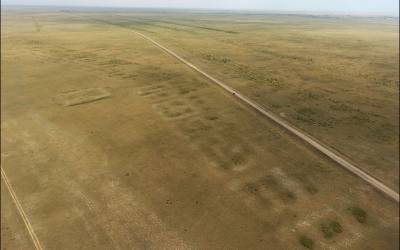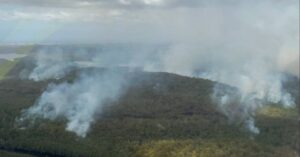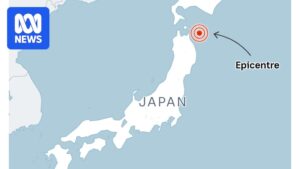
Published in the Antiquity Project Gallery and co-led by Durham University and Kazakhstan’s Toraighyrov University, a groundbreaking paper presents the first detailed archaeological survey of Semiyarka. This vast, 140-hectare planned settlement is the largest known ancient site of its kind in the region. Although first identified in the early 2000s by researchers at Toraighyrov University, the site has only now been investigated in depth. Dating from around 1600 BC, Semiyarka offers insight into a pivotal period when local nomadic communities began transitioning into permanent, urbanised settlements.
Lead author Dr. Miljana Radivojević of UCL Archaeology remarked,
“This is one of the most remarkable archaeological discoveries in this region for decades. Semiyarka changes the way we think about steppe societies. It shows that mobile communities could build and sustain permanent, organised settlements centred on a likely large-scale industry – a true ‘urban hub’ of the steppe.”
The Architectural Marvel of Semiyarka
Today, what remains of the city are two rows of rectangular earthen mounds about a metre high that were the foundations of enclosed homes with multiple rooms. Nearby, the researchers also found the remains of a larger, central structure twice the size of the homes. Though its exact purpose is unclear, it could have been the site of rituals, a common communal space, or may have been the home of a powerful family.
The scale and permanence of the settlement is surprising, as researchers had previously understood the people living in the region at the time to be semi-nomadic, residing in mobile camps or small villages. Co-author Professor Dan Lawrence of Durham University noted,
“The scale and structure of Semiyarka are unlike anything else we’ve seen in the steppe zone. The rectilinear compounds and the potentially monumental building show that Bronze Age communities here were developing sophisticated, planned settlements similar to those of their contemporaries in more traditionally ‘urban’ parts of the ancient world.”
Industrial Hub of the Bronze Age
Semiyarka was likely a major centre for tin bronze production in the region—a rare discovery in the Eurasian Steppe. On the southeast end of the city, researchers unearthed evidence of an ‘industrial zone’ dedicated to tin bronze metallurgical production, the main bronze alloy that defined the Bronze Age. Excavations and geophysical surveys revealed crucibles, slag, and tin bronze artefacts, providing the first firm evidence that Semiyarka metallurgists operated complex production systems rather than small-scale workshops.
Currently, little is known about tin bronze production in the Eurasian Steppe Bronze Age, despite hundreds of thousands of tin bronze artefacts preserved in museum collections. Only one other settlement in eastern Kazakhstan, a Late Bronze Age mining site of Askaraly, has been linked to tin bronze production. Semiyarka shows an entire settlement zone dedicated to tin bronze making, suggesting a highly organised, possibly limited or controlled, industry of this sought-after alloy. The researchers hope that the site can offer more insights into the region’s poorly understood ancient production practices.
Strategic Location and Cultural Exchange
The city is located on a promontory above the Irtysh River in northeastern Kazakhstan and was first discovered in the early 2000s. Its name means “Seven Ravines,” taken from the network of valleys it overlooks. Its strategic location suggests that Semiyarka was once both a centre of exchange and a regional power. It’s also situated in the vicinity of copper and tin deposits in the nearby Altai Mountains, which supplied the raw materials for its bronze manufacturing.
Co-author Dr. Viktor Merz of Toraighyrov University in Kazakhstan, who first discovered the site, said,
“I have been surveying Semiyarka for many years with the support of Kazakh national research funding, but this collaboration has truly elevated our understanding of the site. Working with colleagues from UCL and Durham has brought new methods and perspectives, and I look forward to what the next phase of excavation will reveal now that we can draw on their specialist expertise in archaeometallurgy and landscape archaeology.”
Excavated finished metallic artifacts and pottery shards indicate that the Alekseevka-Sargary people predominantly inhabited the site, a group that were some of the first to construct permanent dwellings in settlements in the region. Other items are reminiscent of the Cherkaskul people, another group that lived throughout the region but were thought to be more nomadic, indicating the inhabitants of Semiyarka likely traded with these and other local peoples.
Future Research and Implications
The researchers hope in the future to examine how Semiyarka’s communities organised production and trade with their neighbours, as well as the environmental impact of these activities. In addition, the team also identified several nearby burial sites and temporary settlements from the same timeframe, which could provide additional insight into the region’s ancient culture.
The research was funded by the British Academy, Kazakh Ministry for Science and Higher Education, and the ERC awarded/UKRI-funded DREAM Project. As the team continues its work, the findings from Semiyarka may reshape our understanding of early urban development in the Eurasian Steppe, offering a new perspective on how ancient societies adapted to and transformed their environments.







